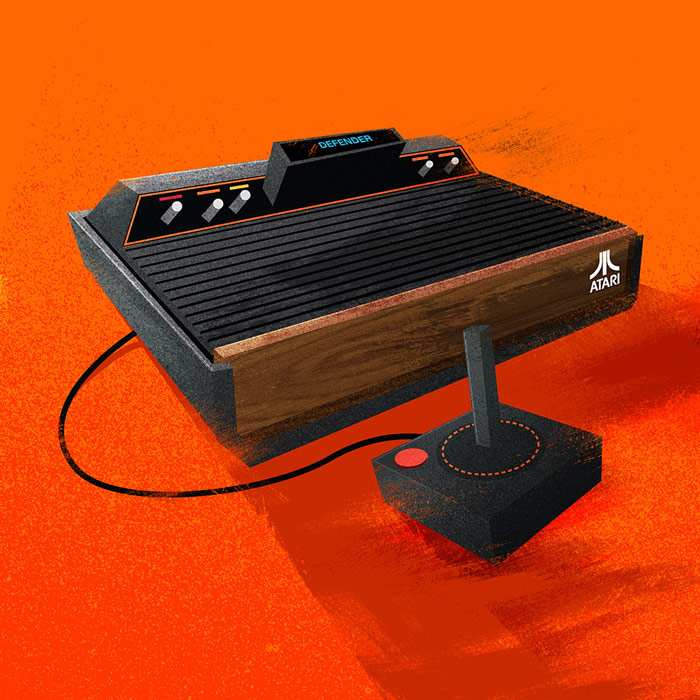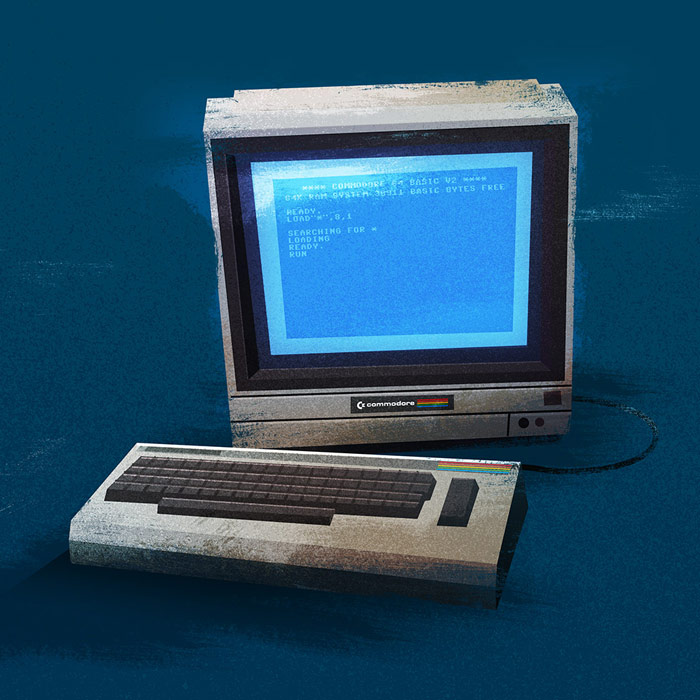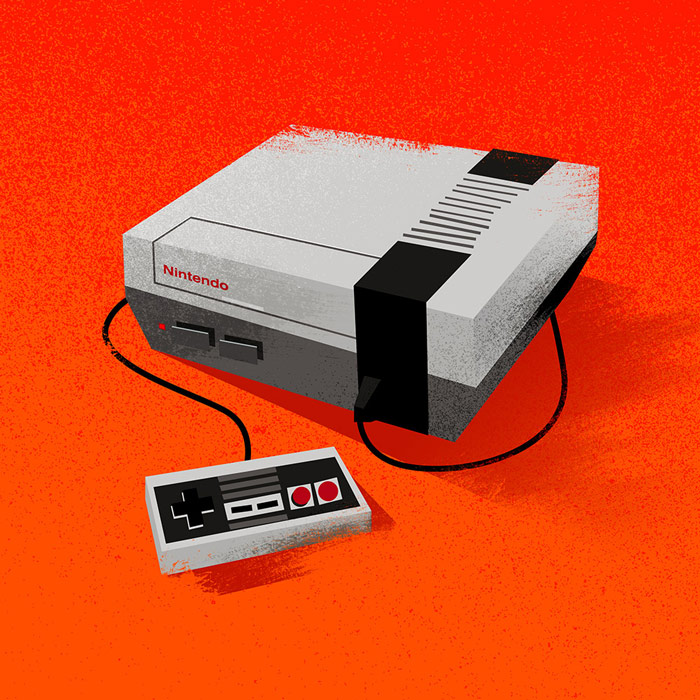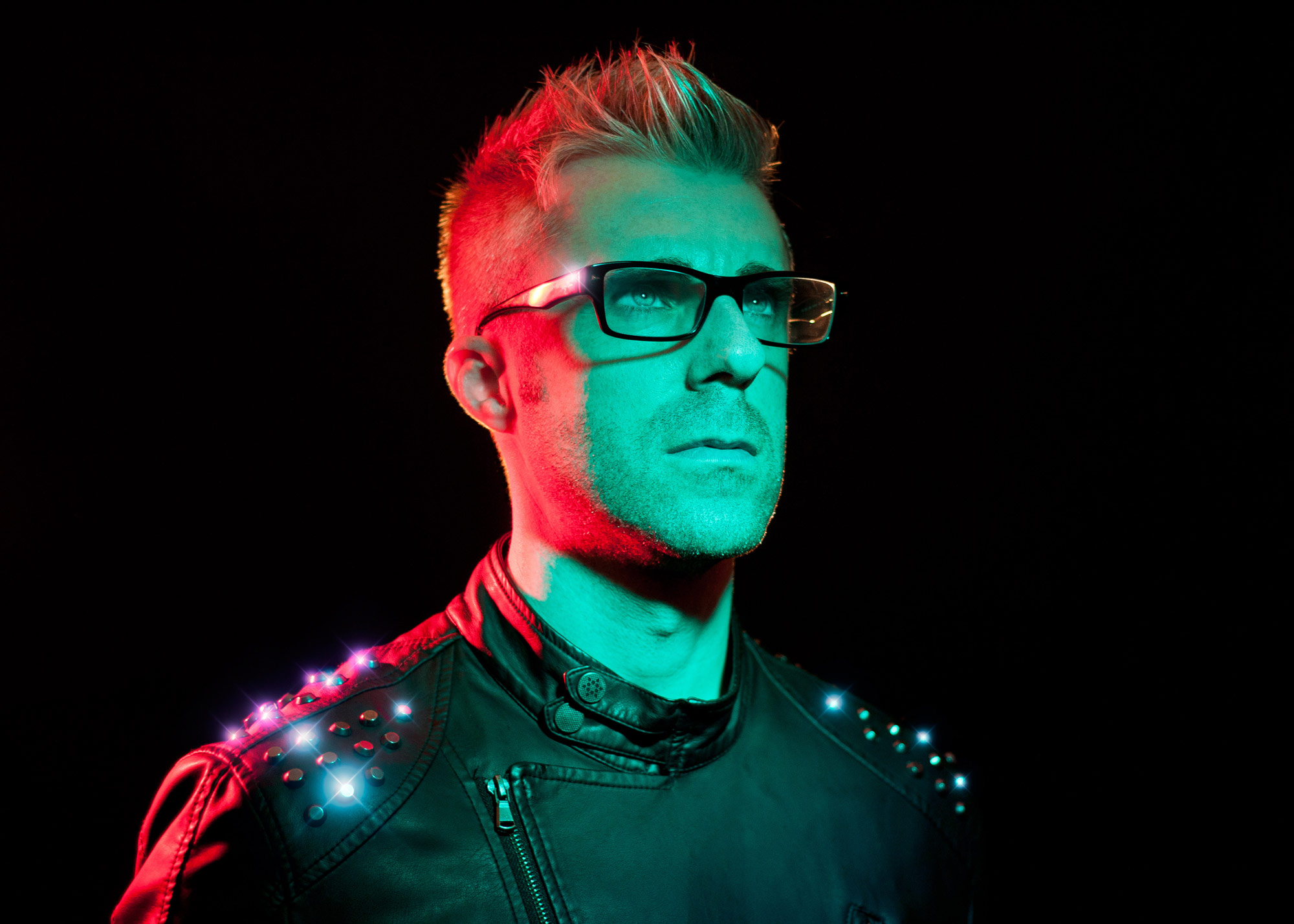
- Interview by Ryan & Tina Essmaker May 21, 2013
- Photo by Krista Comeau
James White
- artist
- designer
James White was born in 1977 and resides in Dartmouth, Nova Scotia, Canada. After high school, he attended a graphic design course, and began his professional design career in 1998 when he began designing websites and print campaigns. He worked at agencies, but continued making personal work, which resulted in the creation of Signalnoise Studio. Today, he focuses on the alternative art movie poster industry and speaks worldwide at various design conventions and events.
Interview
Describe your path to becoming an artist, designer, and speaker.
I’ve been drawing since I was 4 years old. As soon as I could hold a pencil, I started drawing my favorite cartoons, comic book heroes, and characters from the backs of cereal boxes, mimicking what I saw. I was the kid who constantly got busted and yelled at by teachers for drawing in class, and had many parent-teacher meetings because of it. I drew my way through junior high and high school and although I was never one of the popular kids, I didn’t see drawing as an escape—it was just something I loved to do.
It’s weird because I originally wanted to be a police officer. It never occurred to me that I could draw for a living. However, at the end of 12th grade, the guidance counselor helped by giving me a brochure to a graphic design course in my small hometown—I may be the one kid the guidance counselor actually helped. Up until then, I had been using my family’s Commodore 128 to make banners and crappy posters; I was interested in whatever this “computer thing” was. Once I got into graphic design, that was pretty much it for me. I latched onto it and used the tools that they taught me, which were primarily Photoshop and Illustrator, to expand on my drawings. I scanned my drawings and used Photoshop to color them up. And that’s how I got into it.
After I completed the design course, I got a job at an agency making websites in the late 1990s. That was a good time to get into it because the Internet was booming. While working at agencies, I never stopped doing my own stuff on my own time—posters, comic books, and other work—and that grew into what Signalnoise is now. I’m back to doing the same stuff I loved as a kid.
Did you earn a degree in graphic design?
I got a piece of paper and have about $3,000 worth of education. It was a small community college and only a 1-year course for graphic design. Then I took a 2-year course in interactive technology, which taught me how to make a website and introduced me to Flash—that was around 1997. I didn’t go to a fancy art school or anything. In fact, the college I went to was considered a trade school, so there were people there studying carpentry and other stuff, but there also happened to be a graphic design course offered.
And you started working at agencies right after that?
Yeah. I was hired right out of school and worked at a website firm here in Halifax. I worked in the web industry for about 10 years, bounced around to a couple different agencies, and picked up some print skills along the way, which is how I learned to “fake” all my typography. That’s how I got into the industry and then I struck out on my own in 2010 to start Signalnoise.
“…I originally wanted to be a police officer. It never occurred to me that I could draw for a living. However, at the end of 12th grade, the guidance counselor helped by giving me a brochure to a graphic design course in my small hometown…”
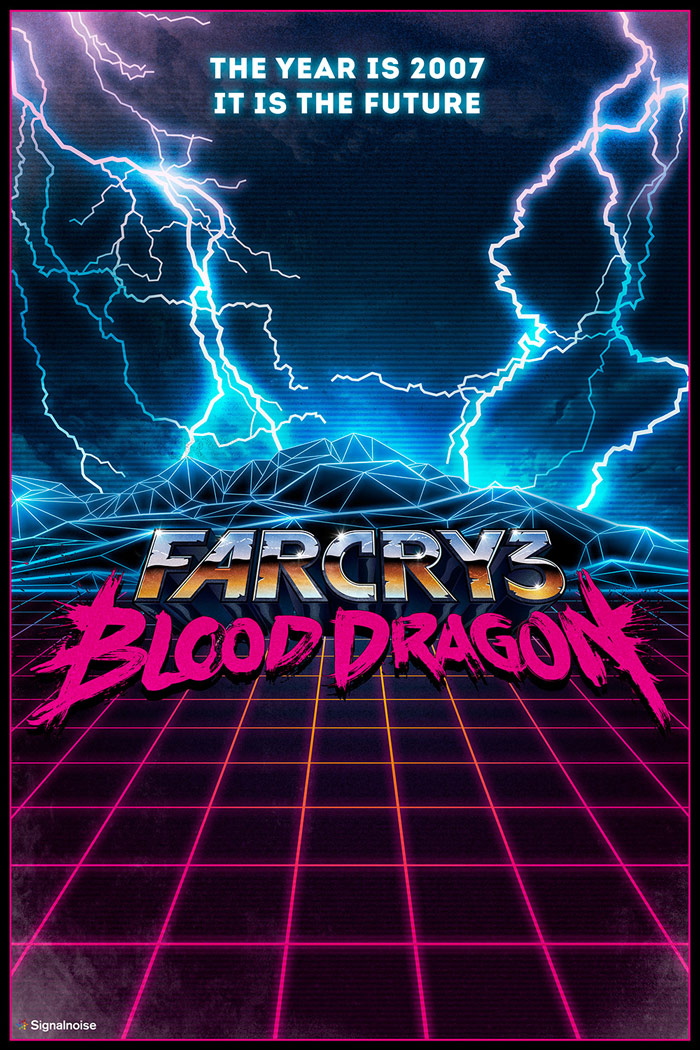
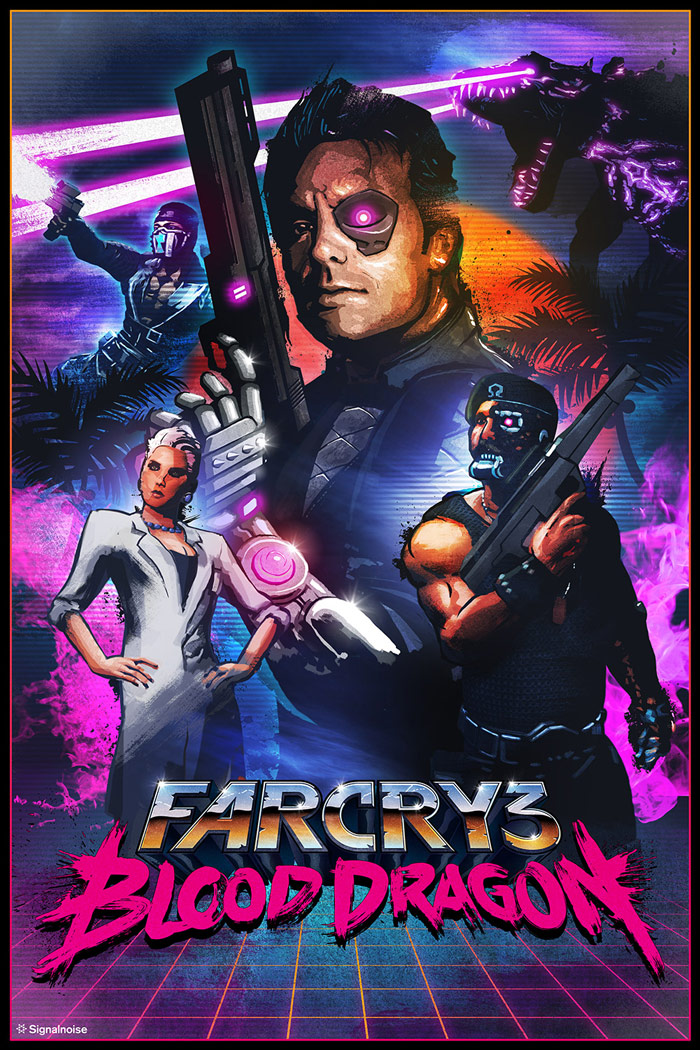
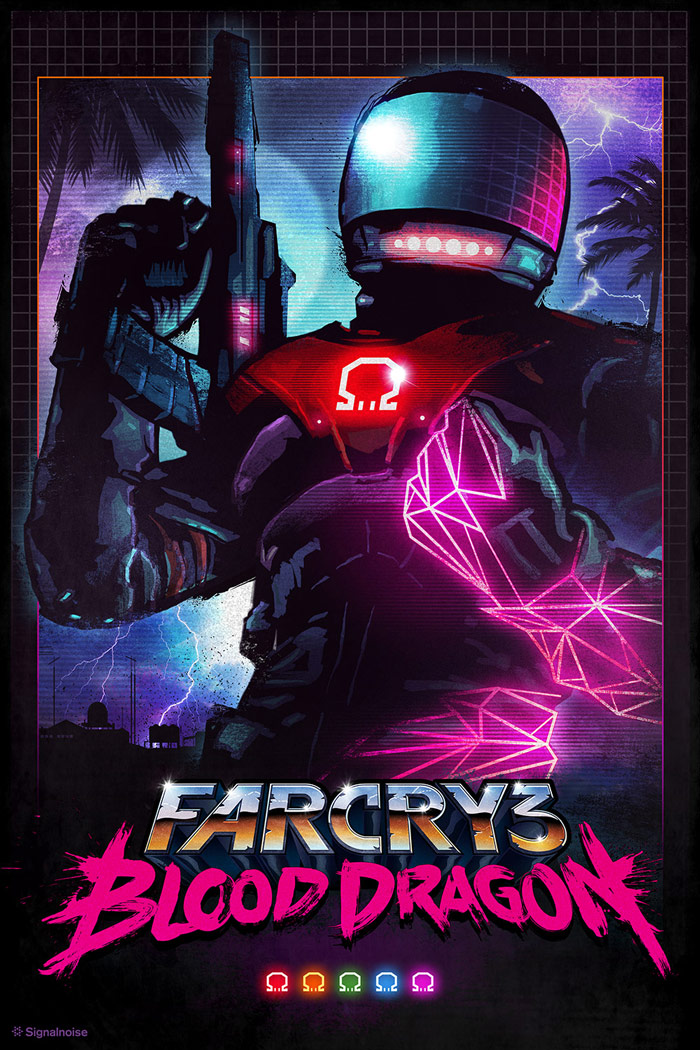
Was creativity a part of your childhood?
Absolutely. It’s hard to explain or convey the amount of stuff I did. Not a day or two went by that I didn’t draw. When I first started drawing, I used to find my mom’s really good typewriter paper and draw on that because it was blank and I only had lined paper. After that, my parents always made sure I had the stuff I needed to draw. They are hard-working individuals; maybe not in the artistic sense, but they taught me to work hard and not quit.
At a really early age, when most of my peers were still using crayons, I started to develop a technique through playing. I figured out how to draw a rough outline in pencil, go over it with black marker for definition, and use colored pencils for shading and coloring. I combined these different mediums to make cool little illustrations. I used that same process through high school, utilizing whatever I had available to me.
In junior high, I dabbled in painting. For half a year, I got lessons from a guy who lived on my road. He painted landscapes and taught me to use brushes and mix paints. Learning how to mix paint colors together helped me better use colored pencils, and eventually, the color mixer in Photoshop. It’s all the little things I’ve picked up along the way that have contributed to everything.
Did you have an “aha” moment when you knew that design and art were what you wanted to do?
Aw, man. I don’t know. I kind of fell into it. It might have been the first day of my graphic design course. To preface this, there wasn’t an art program at my junior high or high school. I never had any outlet that encouraged me to draw, but I kept doing it. The first day of my graphic design class, we did all our paperwork and were then given a piece of paper and a pencil. The teacher said, “I just want to see where you are creatively, so draw something, anything.” I think that was the moment that I knew, “Damn, I’m in the right place!” Somebody is asking me to draw something, which had never happened up until that point and I was 18. The other people in the class drew barns or horses or portraits; I drew a picture of a character named Prophet from Image Comics standing on a pile of skulls. The teacher had her work cut out for her.
Have you had any mentors along the way?
Sort of. I guess the neighbor who taught me to paint, Art Blakeburn, was a bit of a mentor. More than anything, though, he was an encourager. He was a nice man and we actually watched Bob Ross episodes before class and then recreated the painting. I only took classes for a few months, but he encouraged me to keep doing more.
When I got into agency work, I looked at people online as mentors, even though I didn’t know them personally—people like Joshua Davis and GMUNK, who were pioneering what Internet art would become. Watching their work, mimicking what they were doing, downloading their source code, and dabbling with the Flash experiments they made helped me a lot. It gave me insight into the creative process, which I never had experienced before that. Once I got into agency life and discovered people talking passionately about their process, things started to snap together and I started using my tools a little more lethally to do what I wanted to do.
In terms of an actual mentor, though, I haven’t had one. I’m almost 100% self-taught and what I do now is an extension of how I always did art anyway. I’m 36, but I still have the outlook of that 8-year-old who just wants to draw because he loves it. I traded in my crayons for Photoshop, but it’s basically the same thing and that’s why I have a pile of personal work that I don’t make a dime from. But it’s fun to do and that’s how I progress.
“…I’ve been pretty good about being cautious. I consider myself half designer, half artist. The designer in me thinks about learning the tools, doing the work, and getting paid; the artist thinks about continuing to evolve and take risks.”
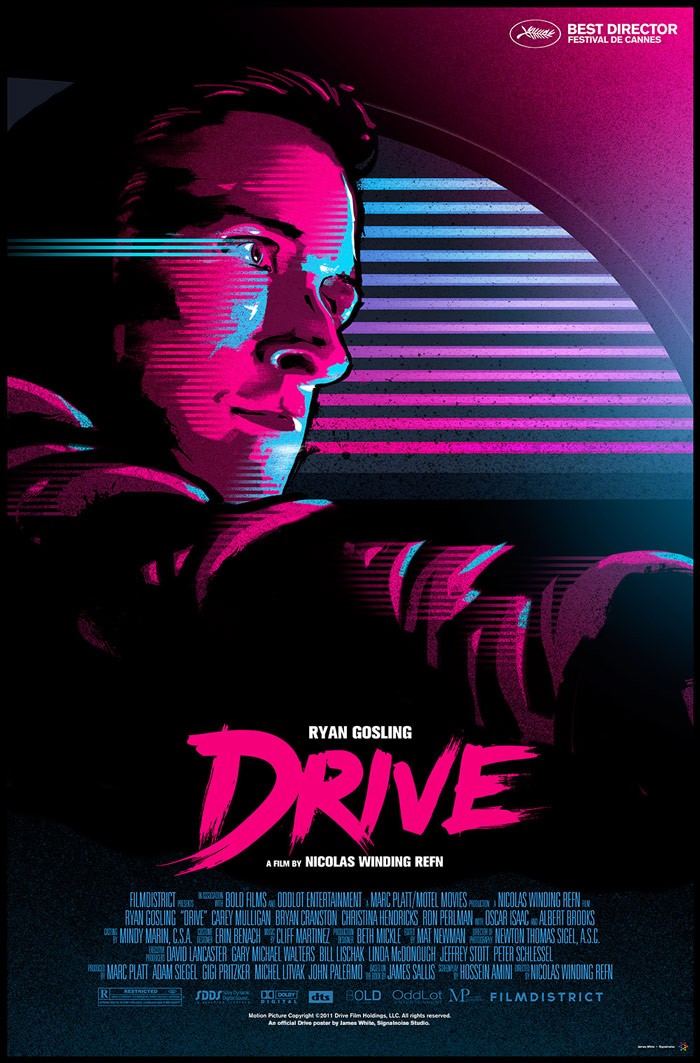
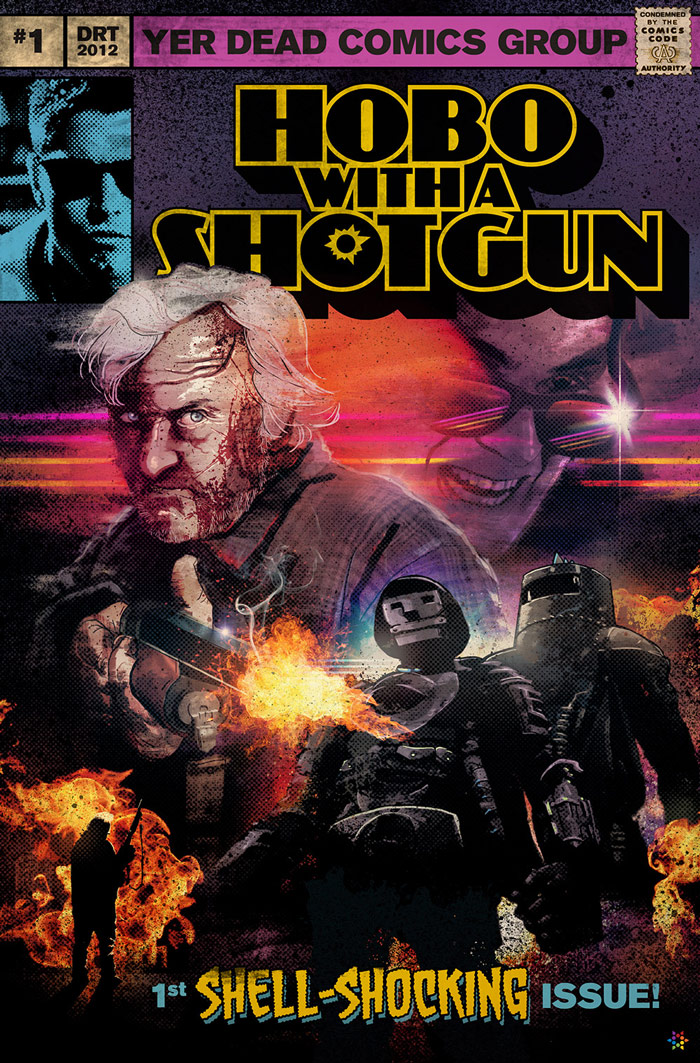
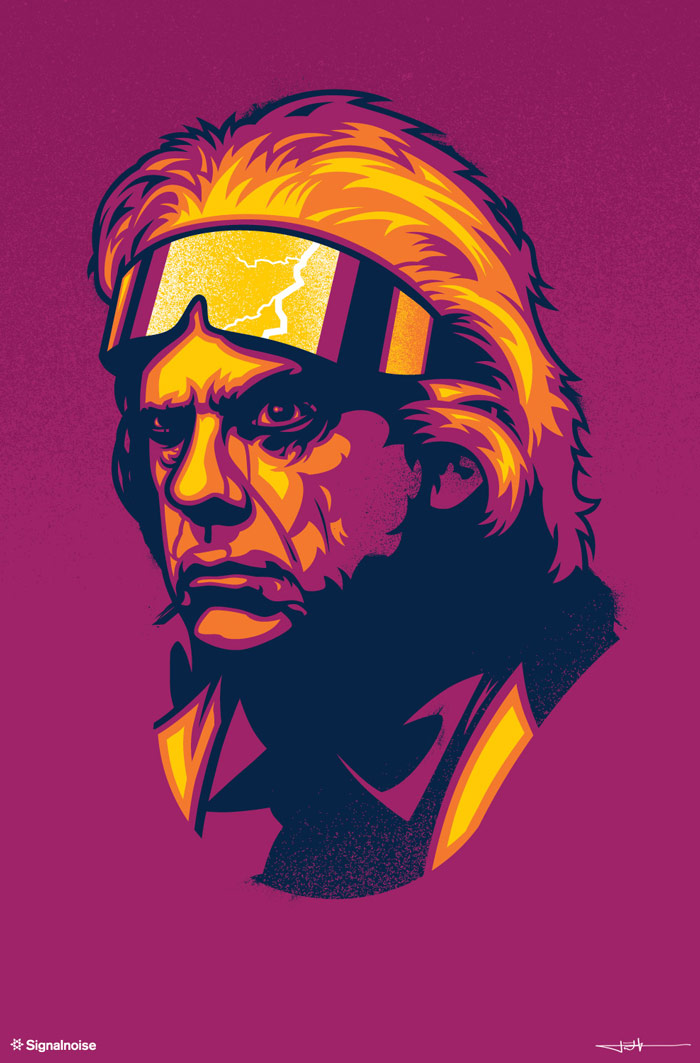
Has there been a point in your life when you’ve taken a big risk to move forward?
Oh, man. Yes! Up until now, I’ve been pretty good about being cautious. I consider myself half designer, half artist. The designer in me thinks about learning the tools, doing the work, and getting paid; the artist thinks about continuing to evolve and take risks. The biggest risk I’ve taken is going out on my own as a freelancer and leaving the agency life with a sweet paycheck to sit in my living room and work. I had clients at the time, but it was still a risk.
A recent risk happened about a year ago. I wanted to bust into the online movie poster scene, so I stopped answering emails from clients, which is not good. I decided to start making as many movie posters as I could in order to get a foothold in the industry. After a year, I had to slam the door on it because it didn’t work—that was in February. Sometimes you take risks and things don’t work out for whatever reason. With a bruised ego, I’m starting to move back into doing client work now. That was the biggest creative risk I’ve taken because it was a year of doing a lot of work and not getting paid much. Don’t get me wrong—I had fun along the way. I got the license to do two movie posters, one for Drive and the other for Terminator 2, and those were the only two I got paid for. I had fun during that year, but when it was over, I realized I didn’t have any client work lined up and I had a bunch of work I couldn’t sell due to licensing. Plus, I was broke—it was a terrible combination.
Tina: You know what’s going to happen now. In six months, people are going to be knocking on your door for movie poster work.
Funny you should say that. It’s already starting to happen. (laughing) It ended well, though. Whenever I feel like I’m in a jam, I try to bury that bad feeling by doing art that I love. Toward the end of my movie poster experiment, I was frustrated and started pumping out little illustrations of the NES console, Commodore 64, and other stuff in a very different style than I was used to. That work ended up scoring me a job working with Canon to illustrate their cameras.
Ryan: I love how putting out personal work that you really enjoy doing generates client work a lot of the time. When it’s something you’re really into, art directors can sense that and will want you to do that kind of work for them.
You’re absolutely right, man. I get asked a lot about why I do so much personal work. Inevitably that stuff does lead to client work and I’ve based Signalnoise on that philosophy. Five years ago, I was doing a lot of rainbows and lens flares on my own because I liked them and then a bunch of people called: VH1, MTV, Universal music, and Toyota. I had an aesthetic and, at the time, the whole 80s retro thing was just catching on. That’s when everything came together and I went out on my own to start Signalnoise. It’s always a gamble, but I’m lucky that it’s worked out the way it has.
Are your family and friends supportive of what you do?
Absolutely. My parents have always been supportive. Like I said, when I was a kid, I always had the materials I needed to draw and there was constant encouragement. But they didn’t smother me with art lessons or whatever. It’s a delicate line, and they danced it perfectly. Even now, they watch my broadcasts online and get after me when I swear. They also follow me on Twitter and read my blog—they’re super interested in all of it because they have watched my progression right from the start. Hi mom and dad!
My friends are a different story because I tend to make friends who are creative in their own right. Here in Dartmouth, my friends are doing their own thing. My buddy Eric Miller started the Dartmouth Clothing Co. and now sells shirts regionally in addition to his day job at an agency. Another friend named Dave Howlett is a comic book illustrator turned writer. My friend Jason Eisener is cowriter and director of a feature-length film called Hobo with A Shotgun, which was shot here in Dartmouth. And another buddy of mine, Mike Holmes, is now a penciler on Bravest Warriors and a cover artist for the Adventure Time comic. All my friends do creative stuff and when we get together, we talk about what we’re working on. That’s encouraging.
“I don’t believe in throwing up a finished poster and saying, ‘Ta-da!’…Each piece has a journey. Posting my process humanizes the work and shows the guts of it.”
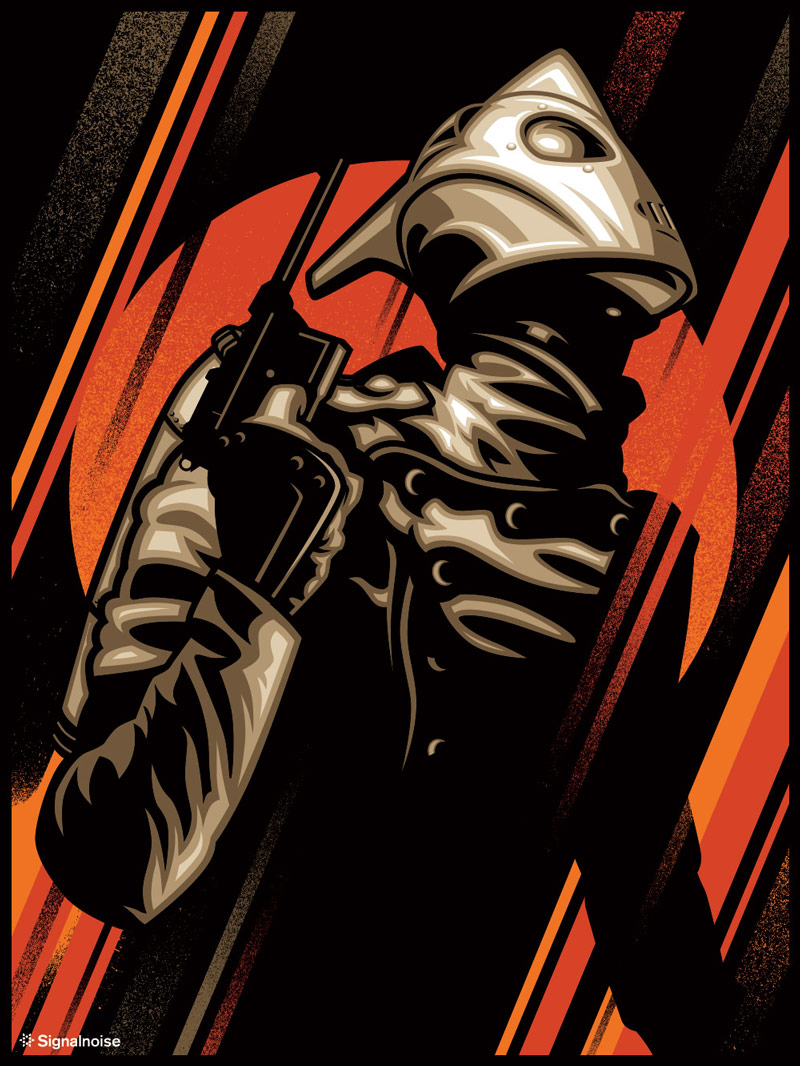
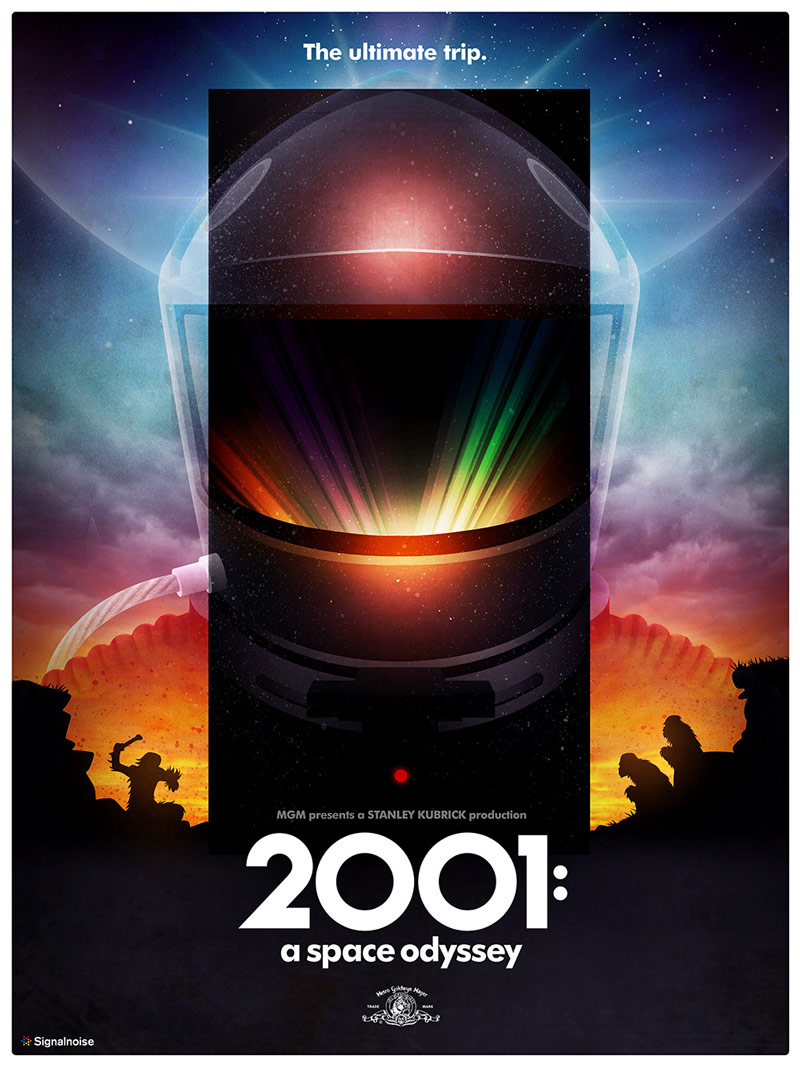
You live in Dartmouth now, but where did you grow up?
I grew up in a small town called Truro, Nova Scotia, which is about an hour north. That’s where I went to high school. Actually, the high school was outside of the small town, so there were lots of farmers and lumberjacks. (laughing) It was the early 90s, too, so it wasn’t cool to be different like it is now. In 1998, I got the job in the web industry and moved to the city. Halifax and Dartmouth are still small. The closest large city to us is Montreal. We’re a small, but rough and tumble crew up here and we work hard.
Do you feel a responsibility to contribute to something bigger than yourself?
Absolutely! The creative community at large. That’s why I do the Signalnoise Broadcast every Thursday. That offers insight into what I’m doing as well as the experiences I have with personal and client projects, process, risk, and those kinds of things. I know there are a lot of questions that younger designers have that only people who have been in the industry for a long time can answer. I talk to a lot of kids and most of the people who tune into my broadcast have just started at an agency or are in school. We talk about a lot of the stuff that I had questions about in my early 20s and wish people had told me. Aside from offering advice, I act as a cheerleader to these kids by encouraging them to make their stuff, to not be scared, and to not get hung up on finding gainful employment. That’s important, but it’s not the number one goal. The priority should be getting better, putting down Call of Duty, and getting your stuff done. Encouraging people to do that is my way of trying to give back.
The broadcast coupled with posting process stuff on the blog gets really good feedback. I don’t believe in throwing up a finished poster and saying, “Ta-da!” Every poster that someone designs went through a process of mistakes and failures. Each piece has a journey. Posting my process humanizes the work and shows the guts of it.
Are you satisfied creatively?
Ooh boy! I don’t think I ever will be. I enjoy the stuff I work on a lot, all the time. I’m always happy when I finish a piece and I’m satisfied with it, but I don’t think I’ll ever be satisfied creatively and I don’t want to be. To be satisfied means to be complacent. I don’t want to be complacent because it’s about the journey, not the destination. I have all my sketchbooks and work from the last 15 years and I can trace my creative lineage. I can see where I’ve been, where I am, and where I’m going. I don’t see not being satisfied as a negative thing because it’s like sandpaper under me that makes me want to wiggle around and keep going. That’s a weird analogy—James White sits on sandpaper (laughing)—but you get what I mean.
Is there anything you see yourself doing in the next 5 or 10 years?
I know I’ll still be trying new things. I would like to see Signalnoise be more solidified as an entity. The reason I say that is because I just came from a conference where Aaron Draplin spoke. Now, I know you guys interviewed Aaron, that lovable lumberjack! When you look at his brand, it’s very well-rounded. Every piece of merch builds his brand, gives you a laugh, or is actually functional. In 5 or 10 years, I’d like to see Signalnoise have it together a little more like that. I see it as something that I can still hone to create it how I want it to be, which is something way bigger than just offering client work. I’d like Signalnoise to be more of a company and something that people can get behind.
That’s cool. If you could give a piece of advice to a young person starting out, what would you say?
Don’t forget about the reasons you got into this in the first place. The reason I say that is that when I was going through junior high and high school, I was doing a lot of drawing. As I got into graphic design, I saw how easy it was to lose the desire to make art and, instead, focus on making sure your resume looks good so you can get work. Don’t get me wrong; that’s all very important. But it seems that school often educates the passion out of people and it turns from something they love into something that’s a job. Then a couple years go by and they remember the things they wanted to do, but have already lost time. I’ve seen that happen a lot. Don’t forget about doing the stuff because you love doing it.
How does where you live impact your creativity?
It helps it along a lot. Here in Dartmouth, we feel the need to work harder than we would in a place like Montreal or Toronto because those places are very cultured cities and have a lot of outlets. We have a very small group here and a lot of the traditional artists are older, so we don’t identify with that part of our city. Being here, you have to work harder to get your work out there and get noticed. My clients are mostly from the States or Europe and I have to work extra hard to jump out of my physical boundaries to reach them. Of course, the Internet makes it easy to do that.
At conferences, a lot of people ask me if I feel the need to move to a larger city to do more. I just think that that’s sort of become a myth. When you’re a freelancer, it doesn’t matter where you are because the Internet makes everything available all the time. You could be on a beach in Maui and still get your stuff done—hey, maybe I will move!
Is it important to you to be part of a creative community of people?
I think so. My friends are a creative group and a couple of them have started a monthly meetup called E3C here in Halifax, giving us a nice sense of local community. Also, the creative community online is like a silent encouragement. When I see people like Justin Maller, Chuck Anderson, and Aaron Draplin moving along with their personal projects and growing their body of work, it’s reason for me to keep doing what I’m doing. Seeing the ambition of others is a positive reinforcement. I don’t know that it’s needed or required, but it’s important to me.
What does a typical day look like for you?
Lots of bath robes, unshaven. (laughing) A typical day is pretty run of the mill. I start work around 9am with a coffee in my fist. I check in on email first thing, jump on the social media circuit to see what’s going on, and then get stuff done. My days are packed and I’m never without something to do, whether it’s a client or personal job—haven’t been bored in years. I have a white board of ideas of personal stuff I want to work on. When I whittle client work down enough, I sometimes use afternoons to play around with a new poster for myself. I keep it to 9am–5pm and during the evenings I’ll take some time to mess around with personal work I want to do.
It was kind of weird moving to freelance. Up until then, I was working at agencies and was used to a project manager telling me what to do all the time, so I didn’t have to worry about my own schedule. Then I moved to freelance and thought, “Oh, shit!” I do enjoy working freelance more just because I can work at my own pace. I’m not hung up on meetings about meetings or chasing clients around the city. This is better.
Tina: Are you traveling a lot right now? I saw that you’ve been doing some speaking gigs recently.
Yeah. I’ve been traveling a lot more this year than I ever have. In the last month, I’ve been home about six days. It’s been crazy, but amazing. It all started a few years ago when I went to FITC in Toronto. I remember sitting in the audience, wondering if I could speak or if I even had anything to say. I went home, sat on it for a few months, and decided to see if I could write a talk or put slides together. I watched a lot of TED talks, so I got the sense that there are different presentation styles. I started thinking about what I would discuss and that forced me to stop and look at my own creative process, which I had never done before. I started thinking about the philosophies behind creating things. Speaking forces me to analyze all of that and speak about it intelligently in a way that the audience can get something from it. In the last three years, I’ve been to the UK, Philippines, Netherlands, Spain, the States, and cities in Canada. I’ve been talking to other speakers and they say that this is the closest thing that we have to a rock show: getting on stage and talking about vectors!
This goes back to what I said earlier about being a cheerleader. When I’m on stage, I talk about a lot of the 80s-inspired foolishness that I make. I’m not telling people to go home and make what I make; the message is to go home and figure out what you want to make. What do you love? What inspires you? Chase that because nobody is going to do it for you.
Ryan: Do you come out on stage to Kavinsky’s “Nightcall” from the Drive soundtrack?
It’s amazing how close you are, actually. I have the Drive jacket and I wear that sometimes when I go out on stage.
Tina: I saw a photo of you in that jacket.
Ryan: So what’s the song you come out to?
For the opening of my presentation, I mimicked an intro screen from a Nintendo game back in the day. My talk is called “Design Renegade” and I made this 8-bit logo where the words appear on the screen in pink with the Blades of Steel “Chiiiing!” noise. I put the musical intro to Contra after that. It gets a laugh every time. Geek, man!
Tina: What other field could you do that in?
You’re right. And people think it’s cool.
(all laughing)
Alright, what music are you listening to right now?
I am chomping at the bit for the new Daft Punk. I’ve been listening to a lot of Justice, Powerglove, and Carpenter Brut mixed in with a lot of 80s metal like Motley Crüe, Iron Maiden, and The Sword. I also like The Kinks and The Beatles. Whatever gets me inspired.
Your favorite movies or TV show?
TV has never been as good as it is now. I watch The Wire, Lost, and Breaking Bad. Arrested Development is coming back on and that’s going to be awesome. I’m a big Seinfeld guy and also like Futurama.
As far as movies, Jaws is my favorite. I also like Back to the Future, Escape from New York, Big Trouble in Little China, and The Thing—I’m a big Kurt Russell fan.
Do you have a favorite book?
I don’t read a lot of novels. My favorite comic book is Hellboy. Anything illustrated by Mike Mignola is the best. I just love his work because he’s like a graphic designer who draws comic books—he’s just that good. In terms of an actual poster book, I have one called The Art of the Poster by Josef Muller-Brockman and that’s my favorite go-to inspiration book. His elegance and execution is unrivaled. It’s so amazing what he did with just type. Mix that with any poster book by Drew Struzan, a movie poster artist from the 1980s, and Bob Peak.
Your favorite food?
I’m a pizza guy. I’m not even a cultured pizza eater. I like the works.
What kind of legacy do you hope to leave?
Oh, man. I hope to be seen as a guy who got away with a lot of stuff. The work I do rivals the definition of “graphic design” and I like that. I like that my work might be considered illustration or art. I like sneaking in little references to childhood things. I believe we should all be doing what we love and not catering to the whims of others. Of course, it helps when you’re paying the bills, but I think your personal passion should be number one. In that vein, I springboard a lot of the work I do off of my own passions. My answer is nothing profound; I just want to do what I love forever. coyote-mark.png” class=”issue-close” alt=”interview close”>
coyote-mark.png” class=”issue-close” alt=”interview close”>
“I hope to be seen as a guy who got away with a lot of stuff. The work I do rivals the definition of ‘graphic design’ and I like that…I just want to do what I love forever.”
